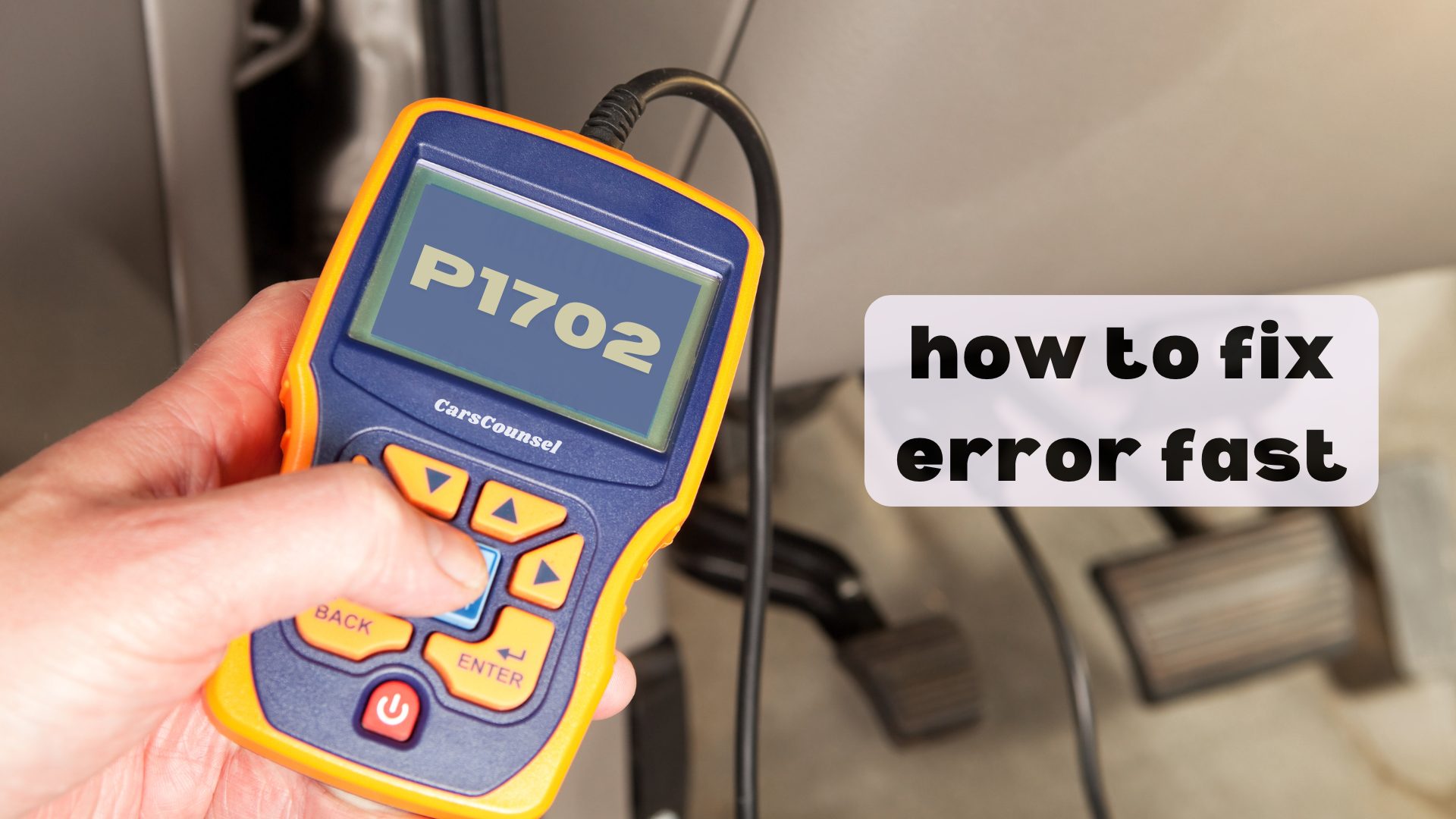When your car’s onboard computer triggers the P1702 code, it’s a clear sign that something’s amiss with your transmission range circuit. You might’ve noticed your vehicle struggling to shift gears or experiencing poor performance, but what’s really going on? Is it a faulty transmission range sensor, damaged wiring, or a malfunctioning control module?
Whatever the cause, ignoring the issue can lead to further damage and decreased fuel efficiency. To get to the bottom of the problem, you’ll need to dig deeper and examine the possible causes – and that’s exactly where we’re about to head next.

Quick Navigation
Key Takeaways
- The P1702 code indicates a transmission range circuit failure, which can cause issues with gear shifting and vehicle performance.
- A faulty transmission range sensor is the primary cause of the P1702 code, but damaged wiring or corrosion can also trigger it.
- Symptoms of the P1702 code include difficulty shifting gears, poor fuel economy, and the Check Engine Light illuminating.
- Diagnosing the issue requires inspecting the transmission range sensor, wiring, and control module, and testing the sensor’s voltage and resistance.
- Repairing the transmission range circuit may involve replacing the faulty sensor, repairing damaged wiring, or resetting the transmission control module.
Code P1702 Description Explained
When your vehicle’s onboard computer detects a transmission range circuit failure, it triggers the P1702 code.
This error code indicates a problem with the transmission range sensor, which informs the computer about the gear position. A faulty sensor can lead to transmission troubles, affecting your vehicle’s performance and drivability.
The transmission range circuit failure can cause various issues, including difficulty shifting gears or getting stuck in a specific gear.
The computer relies on the transmission range sensor for smooth operation, so it’s essential to address this issue promptly. Ignoring it may lead to further damage and decreased fuel efficiency.
Causes of Transmission Range Failure
Frequently, a faulty transmission range sensor is the primary culprit behind the P1702 code, but it’s not the only potential cause.
You’ll need to investigate further to identify the root of the issue. Damaged wiring or connectors in the transmission range circuit can also trigger the P1702 code, leading to transmission faults and electrical issues.
A malfunctioning transmission control module or problems with the vehicle’s computer system can also be the cause. Additionally, moisture or corrosion affecting the transmission range circuit can lead to this code.
It’s vital to diagnose the specific cause to guarantee the correct repair.
Symptoms of P1702 Code
Your vehicle’s transmission system is sending out distress signals, and it’s essential to recognize the warning signs.
When the transmission range circuit fails, you may experience difficulty shifting gears or shifting gears erratically. You might also notice your vehicle not starting or getting stuck in a specific gear. Harsh shifting or slipping gears can be another indication of the problem.
Additionally, you may observe poor fuel economy, which can be a sign of transmission performance issues. If you’re experiencing any of these symptoms, it’s vital to address the issue promptly to avoid further gear failure.
The illumination of the Check Engine Light is often the first warning sign, so don’t ignore it – it’s time to investigate the cause of the transmission range circuit failure, as it’s pivotal to do so.
Diagnosing Transmission Range Issues
Now that you’ve identified the symptoms of a P1702 code, it’s time to get to the root of the problem.
To diagnose transmission range issues, you’ll need to perform a thorough gearbox inspection.
Start by checking the transmission range sensor and its wiring for signs of damage or corrosion. Use a multimeter to test the sensor’s voltage and resistance. If the sensor is faulty, replace it with a new one.
Next, inspect the transmission control module and the vehicle’s computer system for any signs of malfunction. Check for trouble codes and reset them if necessary.
A thorough transmission diagnosis will help you identify the source of the problem, allowing you to make the necessary repairs to get your vehicle running smoothly again.
Repairing Transmission Range Circuit
With the transmission range circuit diagnosis complete, you’re ready to tackle the repairs.
Start by replacing the faulty transmission range sensor if necessary. Next, inspect the transmission range circuit for damaged wiring or connectors and repair or replace them as needed.
Perform circuit checks to verify the transmission control module and vehicle’s computer system are functioning correctly. If issues are found, reset or reprogram them accordingly.
Follow transmission tips to guarantee a smooth repair process. After completing the repairs, test drive the vehicle to verify the transmission is shifting correctly.
Remember to refer to your repair manual for specific guidance on your vehicle’s make and model.
Cost of Fixing P1702 Code
Typically, the cost to fix the P1702 code can vary widely depending on the specific cause of the transmission range circuit failure.
As you’re dealing with transmission costs, it’s essential to get an accurate repair estimate. The actual cost may vary depending on the make and model of your vehicle, as well as labor rates at the auto repair shop.
On average, you can expect to pay between $200 to $500, including parts and labor. However, if the issue is more complex, such as a malfunctioning transmission control module, the cost could be higher.
Consult with a professional mechanic or service center to get a more accurate estimate for your specific repair needs.
Troubleshooting Transmission Problems
Your transmission system is a complex network of components working together in harmony, and when something goes wrong, it can be challenging to identify the root cause of the problem.
To troubleshoot transmission problems, start by checking your transmission maintenance records to verify regular servicing has been done. Next, assess your gear shifting techniques, as improper shifting can put unnecessary stress on the transmission.
Look for signs of wear on the transmission filter and fluid, and check for any leaks. If you’re still unsure, consult your vehicle’s repair manual or seek the help of a professional mechanic.
Solving Transmission Range Errors
When the transmission range sensor fails, it can throw your vehicle’s gearbox into chaos, leading to erratic shifting, poor fuel economy, and even complete transmission failure.
To solve transmission range errors, you’ll need to diagnose the specific cause of the problem. Check the transmission range sensor, wiring, and connectors for damage or corrosion.
If necessary, replace the faulty sensor or repair damaged wiring. Reset the transmission control module and vehicle’s computer system.
After repairs, test drive your vehicle to verify the transmission is shifting correctly. By addressing the root cause of the issue, you can restore peak gear performance and prevent further transmission maintenance problems.
More OBD-II Codes
Conclusion
You’ve now gained a solid understanding of the P1702 code, its causes, symptoms, and diagnosis. Surprisingly, did you know that transmission-related issues account for nearly 40% of all vehicle repairs? Don’t let yours be one of them! By addressing the transmission range circuit failure promptly, you’ll avoid further damage, improve fuel efficiency, and guarantee a smoother ride. Get your transmission range circuit fixed today and get back on the road with confidence!

